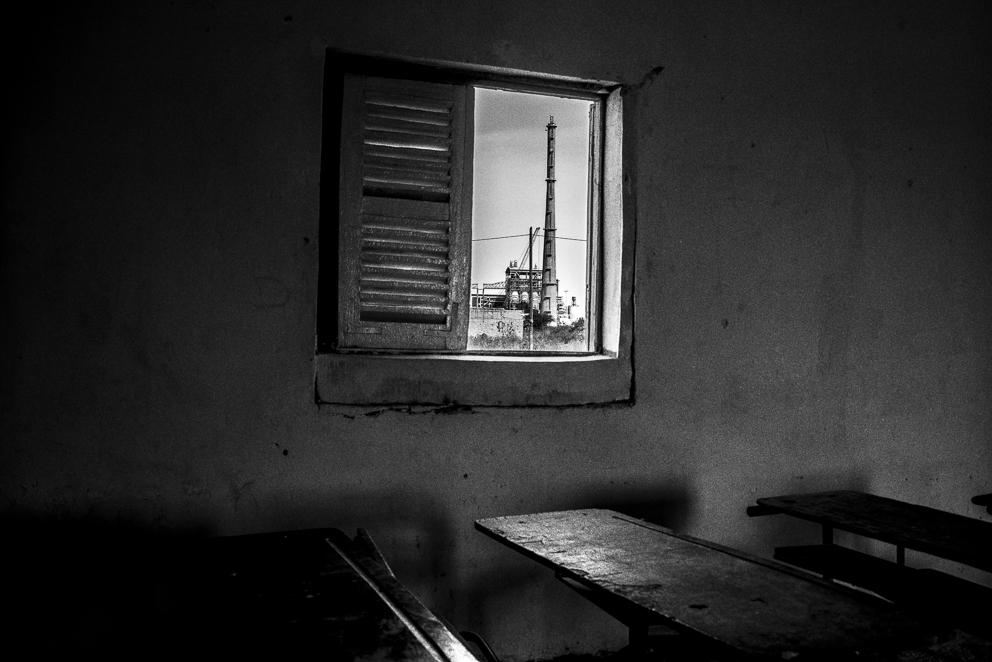Senegal plans to build a large port at Bargny-Sendou, but fishermen, farmers, nomads and residents are pushing back.

View
from one of the classrooms of Miniam Primary School. It is located 388m
from the coal-fired power plant that is soon in operation. According to
teachers, there is still no plan to relocate the school. Credit: Pierre
Vanneste.
On 27 November 2017, Prime Minister Mahammed Dionne stepped in for President Macky Sall to lay the foundation stone of one of Senegal’s major infrastructure projects. In front of traditional dancers and spectators waving supportive banners and signs, he marked the start of construction of a new port in the small town of Bargny.
As this was happening, a group of residents gathered a short distance down the coast in Sendou. They were concerned about the effects the new 290 billion CFA francs ($50 million) project might have on their communities. They had planned to protest against it, but were blocked from leaving their village.
One and half years later, things have begun to change here on the Senegalese coast. A perimeter wall has been erected around a 484-hectare plot of land. This area will eventually contain a four-kilometre pier and two terminals able to process 12 million tons of goods – from oil and gas, to foods and mineral ore – each year. Many of the fears of Bargny and Sendou’s inhabitants have started to become real.
Up till now, for example, Bargny has been a fishing village, with an estimated 80% of the 70,000 population relying on this sector for employment. Many fear that these livelihoods will become untenable, however, once the sea becomes crowded with transport ships and filled with their pollution. The port project promises to create 740 to 2,600 new jobs, but locals like Mamadou Diop, 45, who has been fishing since he was ten years old, doubt if they will go to people like him. “Not everyone can work at the port,” he says, “but only the port will remain.”
Local farmers are also worried. The construction work has already deprived many of the land they once cultivated. Yanga Mbengue, for example, was forced off the three hectares on which she used to grow okra. Like the majority of the population, she did not have titles to the land and so was only owed compensation for the crops found on the day of inspection. That sum came to just 150,000 CFA francs ($260), a sum for which she is still waiting a year later. “We had always cultivated these lands. What will we live on today?,” she asks.
Even nomadic herders are concerned about what the seizure of land by the port – as well as by a new 125MW coal plant and urban development projects – will mean for their way of life. Some pastoralists such as Omar Kâ and Elhadji Kâ, who have never seen a port in their lives, hope their young people will be able to find employment among these new schemes, but no one has come to consult them or explain what impact the projects will have on their communities. “They plugged up the quarries for the construction of the port,” says Elhadji, a leader among the livestock farmers.
“Since then, we can no longer used to water livestock. There are still those one behind the power coal plant, but once the port wall is closed, we will no longer have access to them.”
Comments
Post a Comment